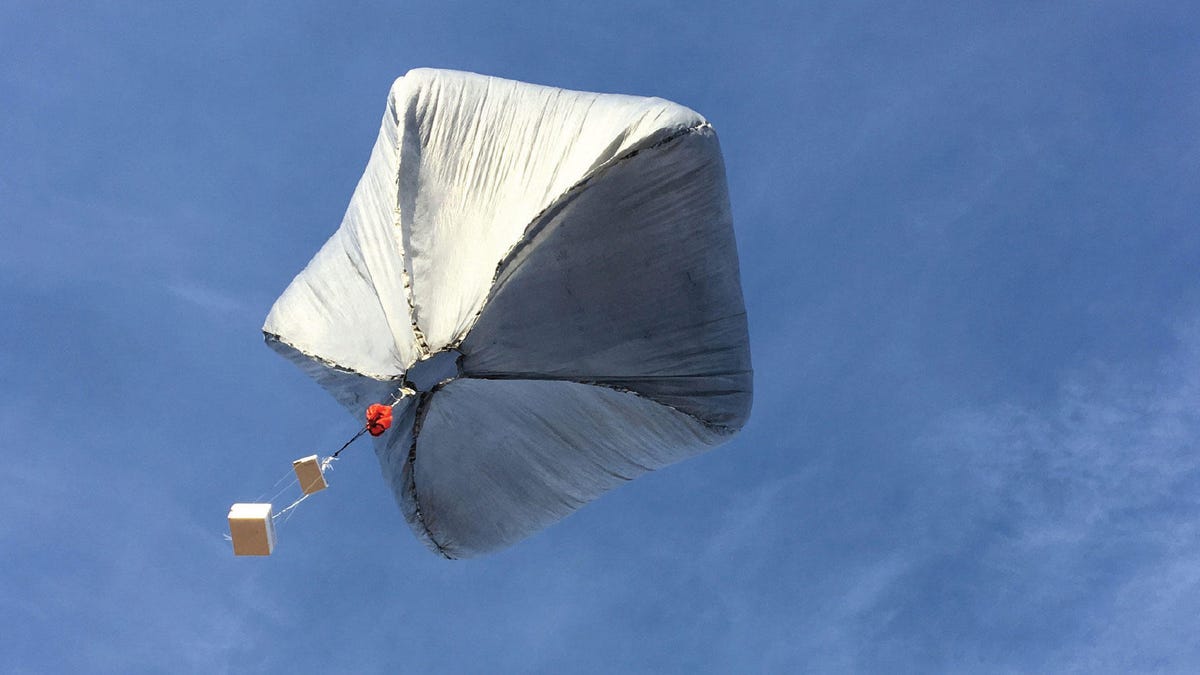AT&T 5G network coming to Houston in 2018, LA and San Francisco in 2019
This year is for mobile Wi-Fi hotspots, but 5G phones will arrive in 2019. Also: AT&T's AirGig networking is a step closer to reality.

5G networks could help connect new sensors like balloons used in scientific research.
Racing to make high-speed 5G networks a reality, AT&T will light up New Orleans, Houston and San Antonio, Texas; Jacksonville, Florida; and Louisville, Kentucky with the next-generation mobile technology this year.
The cities will join others already announced -- Atlanta; Dallas and Waco, Texas; Charlotte and Raleigh, North Carolina; Indianapolis and Oklahoma City -- the company said Monday at its Spark event. Patches of some bigger cities will see 5G in 2019: Las Vegas, Los Angeles, Nashville, Orlando, San Diego, San Francisco and San Jose.
Also at the show, AT&T said its 5G network is mature enough that it's placed a call with a handset using an early version of Qualcomm's forthcoming 5G radio chip.
"We have completed a connection between that test device and the production network we're building," said Gordon Mansfield, AT&T's vice president of converged access and devices.
You might already be exhausted by the 5G hype, but it really could mean a major change in our lives. It should bring faster data speeds and, arguably more important, shorter communication delays that could enable technology like mobile gaming, self-driving cars and augmented reality. The first version is due to arrive in 2019, but later incarnations of 5G technology should expand it to things like smart traffic lights, smartwatches without much battery power and home broadband that doesn't require anyone to string a fiber-optic cable to your house.
AT&T is vying with Verizon, T-Mobile and Sprint to spread 5G mobile networks as rapidly as possible. There aren't many ways to stand out from the competition and get us to switch carriers, but network transitions offer one chance.
AT&T plans to bring 5G coverage to 12 US cities (blue) in the South and Midwest in 2018 then to parts of seven generally more populous ones (red) in 2019, the year 5G phones are expected to arrive.
Fast, but not so fast
The parade of 5G firsts shows how eager the carriers are to capitalize, but it's best not to get too excited yet. The 2018 AT&T networks will work only with mobile network devices that send your phone or laptop data with a Wi-Fi connection. The partial coverage in 2019 also won't be any good if you don't live or work in the right spots. And of course, you'll need to buy a new phone.
Several phone makers have said they're committed to making 5G phones by next year. Samsung will begin selling its first 5G-equipped phone in 2019, said Justin Denison, Samsung's senior vice president of product marketing, at the Spark conference, but he declined to share further details. 5G is expected to show up in the company's next flagship, the Galaxy S10, but it may not be Samsung's first 5G phone.
Bob O'Donnell, an analyst at Technalysis, expects to see the first 5G phones announced early next year. "Somebody is going to do it at Mobile World Congress in February," he said, referring to the major mobile technology conference in Barcelona.
AT&T's 5G will first use "millimeter-wave" connections -- high-frequency radio waves that have been largely untapped until now because it's hard to send a signal very far through walls and even air.
"It doesn't propagate far, but it bounces and reflects well," Mansfield said. For someplace like Times Square in New York City, "you can cover all that area with just a handful of nodes that are strategically placed," he said. Millimeter-wave bands are uncluttered enough that there's plenty of bandwidth for fast data rates, he added.
Later, AT&T will add 5G connections with lower-frequency radio bands that travel farther. That'll support 5G expansion beyond metro areas into more suburban and rural areas.
In another step in the race, Sprint and network equipment maker Nokia announced they've got 5G connections working using an antenna-boosting technology called massive MIMO -- multiple input, multiple output. The companies will demonstrate it this week at the Mobile World Congress Americas show in Los Angeles.
AirGig improvements
AT&T also announced a new step toward commercialization of technology it calls AirGig that could help spread high-speed internet access more broadly. AT&T's AirGig piggybacks on power lines, putting inexpensive antennas every 100 or 200 meters and channeling data along the route at multi-gigabit speeds, Mansfield said.
AT&T has tested AirGig in Georgia, but now it's in "advanced discussions" with manufacturers who'll start making and testing AirGig equipment, he said. "We'll likely move onto another round of trials with some further capabilities that have progressed in the labs," he said, with those tests very likely to happen in 2019.
Homes wouldn't connect directly to the AirGig data flow, but AT&T plans to put wireless stations periodically along the route that provide the last-mile connections. The idea is to lower the cost of connecting houses compared to fiber-optic lines, which are fast but costly to bury underground or string along telephone poles.
"Getting fiber everywhere, especially as you get out into rural areas, is very costly. If you could use the power grid already there, it lets you take those higher-speed capabilities in a more cost-effective way than hanging fiber along those existing routes," Mansfield said.
First published Sept. 10, 8 a.m. PT.
Update, 10:43 a.m. PT: Adds mention of Sprint and Nokia progress with 5G technology.
Update, 1:03 p.m. PT: Adds comments from Samsung's Justin Denison and Technalysis analyst Bob O'Donnell.
The Smartest Stuff: Innovators are thinking up new ways to make you, and the things around you, smarter.
Special Reports: CNET's in-depth features in one place.

